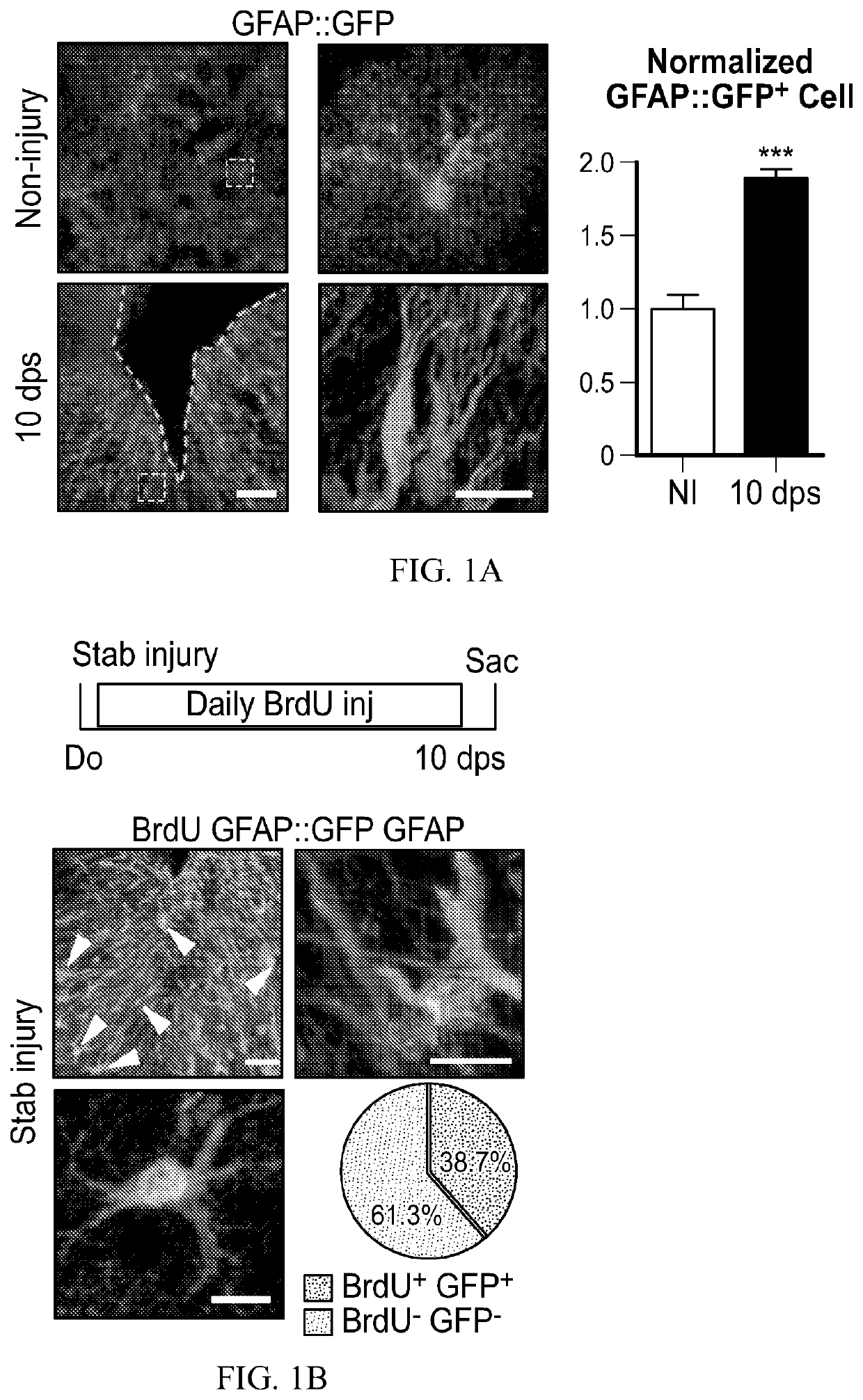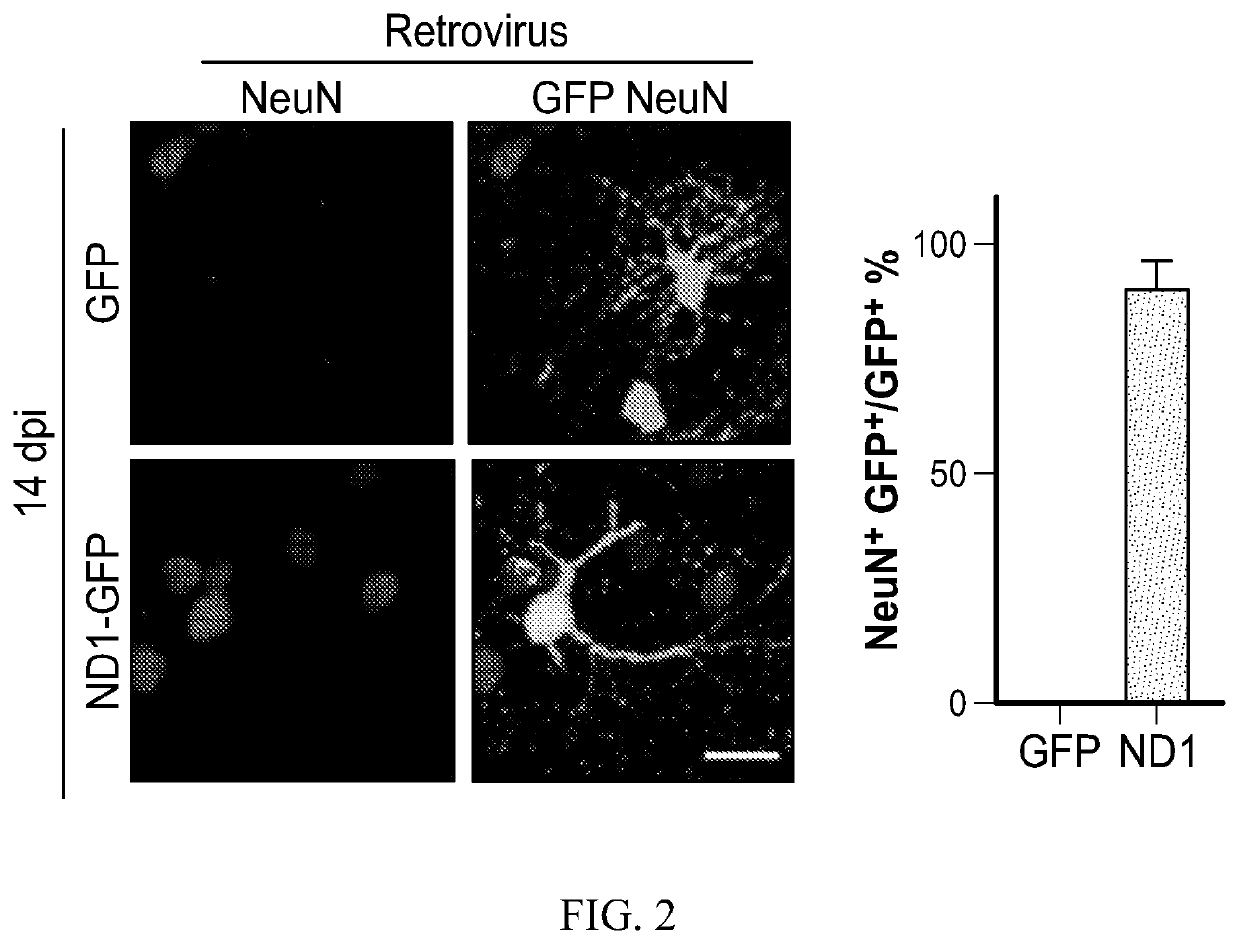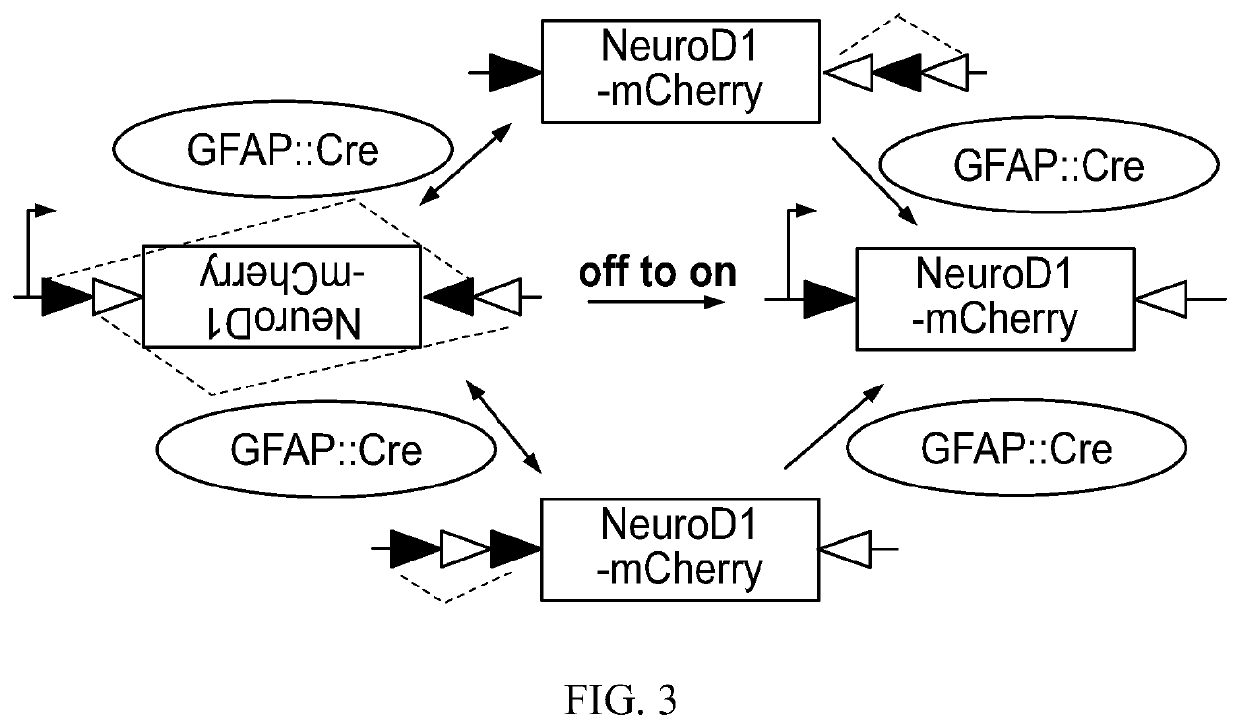Methods and materials for treating brain injuries
a brain injury and material technology, applied in the field of mammal brain injury treatment methods and materials, can solve the problems of neuron loss and glial proliferation, disrupting the delicate balance between neurons and glial cells in the brain,
- Summary
- Abstract
- Description
- Claims
- Application Information
AI Technical Summary
Benefits of technology
Problems solved by technology
Method used
Image
Examples
example 1
Glial Scar Back to Neural Tissue Through NeuroD1-Mediated Astrocyte-to-Neuron Conversion
[0063]This Example investigates in vivo glia-to-neuron conversion. A severe stab injury model in the mouse motor cortex was employed to investigate the impact of cell conversion on the microenvironment of injured brains. Different from the result of killing reactive astrocytes, converting reactive astrocytes into neurons reversed glial scar back to neural tissue. Astrocytes were not depleted after neuronal conversion, but rather repopulated after conversion. Ectopic expression of NeuroD1 in reactive astrocytes transformed A1 type toxic astrocytes into less reactive astrocytes. Reactive microglia were also ameliorated, and neuroinflammation was reduced following NeuroD1-mediated astrocyte-to-neuron (AtN) conversion. Furthermore, blood-brain-barrier (BBB) was restored, and neuronal synaptic connections were re-established after AtN conversion. Thus, the results provided herein demonstrate that Neur...
PUM
| Property | Measurement | Unit |
|---|---|---|
| Volume | aaaaa | aaaaa |
| Fraction | aaaaa | aaaaa |
| Length | aaaaa | aaaaa |
Abstract
Description
Claims
Application Information
 Login to View More
Login to View More - R&D
- Intellectual Property
- Life Sciences
- Materials
- Tech Scout
- Unparalleled Data Quality
- Higher Quality Content
- 60% Fewer Hallucinations
Browse by: Latest US Patents, China's latest patents, Technical Efficacy Thesaurus, Application Domain, Technology Topic, Popular Technical Reports.
© 2025 PatSnap. All rights reserved.Legal|Privacy policy|Modern Slavery Act Transparency Statement|Sitemap|About US| Contact US: help@patsnap.com



